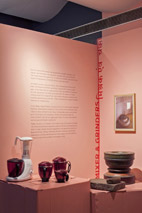We were first invented in 1915, by Herbert Johnson as an 80-quart Hobart mixer – but like the refrigerator and pressure cooker – we were initially intended for commercial purposes. Made available to domestic kitchens after the First World War, as 5-quart KitchenAid mixers, we cost a whopping $189.50 and weighed 65 pounds.
Our first hand-held model was designed by Swedish designer Ivar Jepson. His MixMaster was portable, compact and cost just $18.25. The model received a patent for its technical wizardry and even at the height of Depression, 3,00,000 pieces a year were sold.
As electric mixers, we were high-performing appliances that could beat, whip, blend and fold ingredients, making them much sought after in the West. But our experience in India was different. Designed for soft ingredients, we often gave out under the rigours of Indian cooking. Even for a regular fare, nuts, spices and grains needed to be crushed, pound and pulverised – a feat undertaken by tough handheld implements, traditionally.
In the 1960s, Satya Prakash, in a bid to rescue his wife’s failed imported machine, attempted to create us in the context of the demands of an Indian kitchen. He built a new ‘Mixie’ with greater power and sturdier built. In doing so, he invented an entirely new product-type. As Mixer Grinders, we not only performed tasks of a mixer and blender, but also ground harder ingredients.
Today, we are a loyal staple in the Indian home. The market is divided into mass and premium segments with the former outnumbering the latter in sales. Preethi Kitchen Appliances, the appliances division of Bajaj Electricals, Philips, Maharaja Whiteline, Butterfly Gandhimati Appliances Limited and Kenstar are major players and the greatest demand comes from southern and western India.




